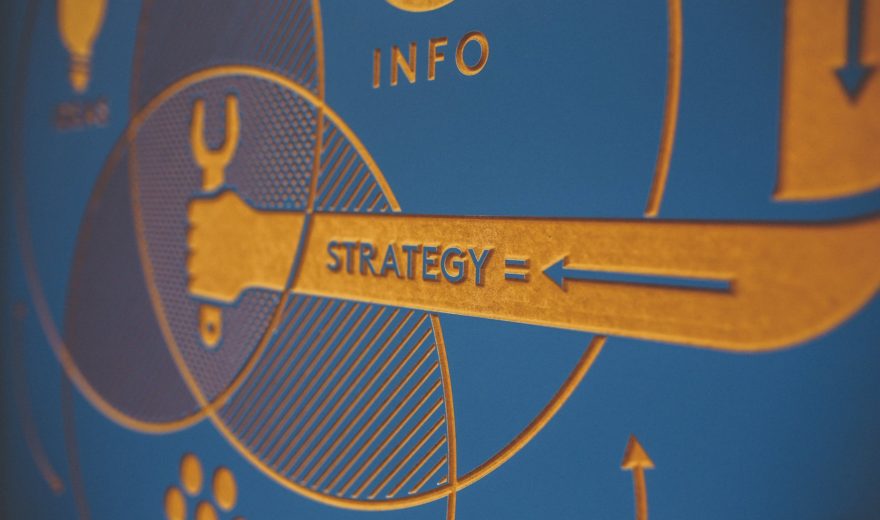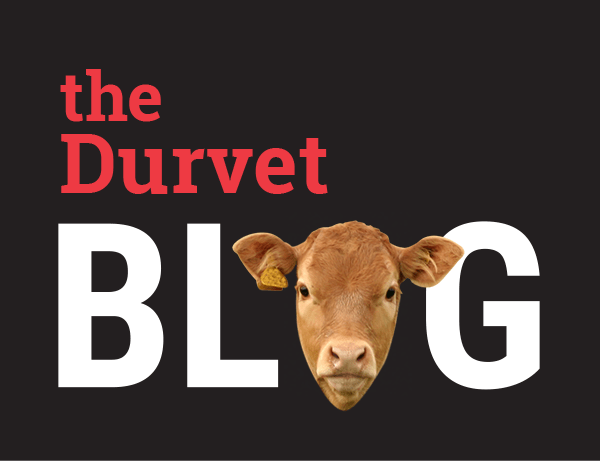
Have you ever wondered why things are placed on shelves the way they are? Have you ever looked at grocery store shelves and wondered about the thought process that went into building the modular (shelving plan)?
In one of my past jobs, I had the opportunity to work for one of the top marketers in the animal health industry...Farnam. I like to say that experience was great training for my calling in life...working with farm store dealers.
I learned so much and I've used this knowledge every day for the past 20 years. Marketing is something that those of us in Ag take for granted, but if we want to move forward in the next 5 years we'd all better get on the bandwagon.
I've worked for some of the bigger companies out there...Walmart, JC Penney, Tyson Foods, Cargill and Farnam...before making my way to Durvet. At each stop along the way, I tried to learn something that I could use in my career.
The constant has been my territory. I've always worked the same geographical area...the Mid-South. In my territory, there are a lot of dealers doing things TOP SHELF and just as many getting by with the bare minimums.
But in this changing world of Agriculture, we need to get on the bandwagon of being better and doing things with a purpose if we want to keep our market share. Here are some key "top shelf" marketing tips to keep in mind:
- Placement is everything, no matter what you're merchandising.
When I was in college, I worked for JC Penneys in the cosmetic department. Now I can hear the snickers from here, but yes I actually know a little bit about makeup and girly things. But what I remember most from being the Revlon Girl was that I had to display their products in a certain way to get maximum exposure.
Revlon was one of the better makeups at the time and it was not readily available in the mass market. There was a flow to the products (you just didn't put lipstick next to mascara...don't you know lipstick goes by nail polish? Every southern gal knows you're supposed to match your lipstick to your nail polish.)
When I worked for Tyson Foods, they wanted to 'Feed you like Family'. They created pictures of beautiful dinner plates and pasted them all over the sides of their tractor trailers. The goal was that every person who saw a Tyson truck on the interstate would go to the supermarket to purchase these products that were featured with their family in mind.
What other poultry company in the USA has made your family their first priority and posted it all over there mode of transportation? I can't think of another one.
I share these stories to make this point: Where you place products and how you place them on the shelf tells your customers a lot.
Check Out Counter-There’s a reason candy bars, chapstick, magazines, and other small yet practical items are placed at or near the checkout counter. When waiting in line, there's an added sense of urgency to buy something before reaching the front, and a perfectly placed item can easily persuade the consumer. Many times a dealer will tell me "we just don’t have any more room on the counter". My advice would be to rotate these items. You will be pleasantly surprised by what sells.
Top Shelf vs Bottom Shelf - I'm 5’2”. I tell you this because where things are on the actual shelf makes a huge difference. Gallons of products should be placed low on the shelf. Regardless of the cost, if a gallon of $100 product falls on a customer who's stretching to reach it, you might have more than a spill on your hands.
Have you ever noticed where the best vodka is on the shelf in the liquor store? (Regardless as to whether you've ever been in a liquor store or not, this is an important lesson) The brand I prefer is at eye level...I mean eye level for a female average height of 5’5”. The brand isn't cheap. It's not the most expensive either. In a liquor store, cheap goes low and expensive goes high.
The best tasting liquor is probably on the top shelf, but the product that sells well and has a good flavor is at eye level. The super cheap product is on the bottom shelf.
Multiple placements- If you have a product that can be used for a variety of problems, needs or desires, you should place it in a multitude of areas in the store.
For example, we sell a product, Fly Rid Plus Spray, and we market it as an equine fly spray, however if you read the label you would see that it's very broad “Horses, Dogs, Goats, Sheep, Hogs, Poultry, Beef and Dairy Cattle and their premises, such as Barns, Stables, Pet Beds, Porches, and Garages. Also approved for other indoor-outdoor applications as indicated by label directions.”
But most dealers only place it in the equine section of their store. If you place it in the poultry section too, you might be amazed at the increase in sales due to the poultry label.
- Signage Matters!
Outside signage- This is important to draw customers off of the road and into your store. Many times we think it might cost too much but if you want to make the most of your location, you need to invest in a good sign. Of course, each community has rules about what's appropriate, so please check with City Hall to make sure you're in compliance.
Indoor signage- This is much easier and just as important, but it's imperative that it's well thought out and implemented effectively in order to increase sales. From the moment your potential customer walks into your store until they check out and leave, you should be doing everything in your power to catch their eye and get them to spend money in your store.
Try walking into your store and looking at it like a customer. Do you have point-of-sale displays with signage? Do you have starburst placed on new products, sale items or even discontinued items?
Displays should draw attention and engage the customers. Signage will help accomplish this goal and give you a distinct advantage over a standard display with no signage.
Do you have a part-time employee who has great penmanship? If so, empower them to keep your signage up-to-date, fresh and engaging.
- Be an EXPERT. Become the trusted source in your market.
Why is this so important? Experts make more money, sell more products and have more referrals. Basically, it's free advertising for your store. Find your niche, hire people who have knowledge, and get vendors train your employees.
All are ways for your store to become the expert in the marketplace. This will drive business to your front door and ultimately to your cash registers. Become valuable to your customer base. Know who you're marketing to and know what you're marketing.
- Make a plan and work the plan.
This can be as simple as a calendar with endcap rotations, signage changes, and customer appreciation days. If you make a plan, assign responsibilities and then keep it up to date. Work your plan. Make this a habit and it will become easier the longer you do it.
- Become Social!
Really, I did just say that! Print advertisements are great but stores tell me all the time that they don’t have the money to do them. Not to mention that junk mail gets tossed and newspapers aren't read like in years’ past.
Facebook, Twitter, and Instagram are either free or inexpensive. Social media is how most millennials find out what's going on in the world. So if we embrace it and learn from the younger folks, we can create a successful social media atmosphere.
The most important thing is that you keep it up to date, make it fun, and make it interesting. Once again, look at the strengths of your employees and empower them to help with this endeavor. This is your easiest to use marketing resource.
- Atmosphere is essential.
If your store is dark and gloomy, then people will drive by. If you store is dirty (and yes I mean the entire store, floors, restrooms, shelves and product) then no one will want to shop there.
Do you put similar products together or do you put them on the shelves by brand? Or do you just throw them in the closest empty slot? Do you think about where you put that GALLON of fly spray? Do you think about the demographics of your customers and how that might affect your product placement? Is your staff friendly, helpful and easy to recognize, or do they just point to where the product is supposed to be and continue playing on their phone?
All of this things are vitally important. They build your atmosphere. They build rapport. And ultimately they will either increase or decrease your bottom dollar.
Marketing is a science, but it's also a lot of common sense. Look at your store and think about what would be your first choice when purchasing a product or service.
Good vibes, first impressions, smiles and implied value will bring more to your bottom line than sitting back and doing nothing.

 BACK TO MAIN BLOG
BACK TO MAIN BLOG 
Comment